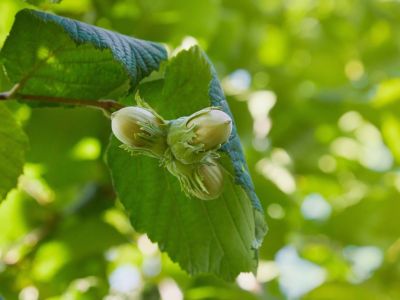How to Grow Filbert Trees
Hazelnut trees, also called filbert trees, are hardy in USDA plant hardiness zones 4 through 8. When growing hazelnuts in the coldest part of this range, choose American hazelnuts, which are more cold tolerant than the European types. Temperatures below 15 degrees F. (-9 C.) after the flowers bloom can cause crop loss. Hazelnuts need 15 to 20 feet (4.5-6 m.) of space to spread. They adapt to almost any soil as long as it is well-drained, but perform best in a soil with plenty of organic matter. Dig the planting hole twice as wide as the root ball and just deep enough that the soil line of the tree will be even with the surrounding soil. Set the tree in the hole and backfill with the soil you removed. Press down with your foot as you go to remove air pockets. Water the soil around the tree slowly and deeply after planting. You’ll need to plant two different varieties for good pollination.
Hazelnut Care
Never allow the soil around a hazelnut tree or shrub to dry out completely. Water weekly during dry spells, allowing as much water as possible to sink deep into the soil. Hazelnuts don’t need regular fertilization if they are grown in good soil. If you notice slow growth and pale leaves, the plant will probably benefit from a small amount of nitrogen fertilizer in spring. Hazelnuts need little or no pruning when grown as a shrub, other than the removal of suckers that arise from the roots. To shape a tree, choose six strong upper branches to form the main scaffolding and remove the lower branches as well as those that hang down. Hazelnuts drop from the tree as they ripen in fall. Rake the nuts into a pile for easy harvest and gather them every few days. The first nuts may be empty. If you’re looking for a small tree or shrub that is practical as well as attractive, consider the hazelnut. Growing this hardy plant is easy and you’ll enjoy the first nuts from your tree in as little as four years.
